Washing Flavor characteristics of Kenya AB Coffee Bean K72 detailed description of bean seed grade in Kenyan coffee bean producing area
Despite the fact that there is only one coffee bean from Kenya on the coffee bean list in front street, it used to be a "big coffee maker in Kenya". If you are an old fan of Qianjie, you must have drunk the Kenyan AB cranberries from Qianjie. You should know that the AB grade is second only to the AA grade of high-quality Kenyan coffee beans, this cranberry has a very sour juice-like acidity, especially at high temperatures, and the entrance is full of sweet berries; at low temperatures, the acidity is more condensed, accompanied by a creamy taste. Here are the details of the Kenyan AB coffee on the front street:
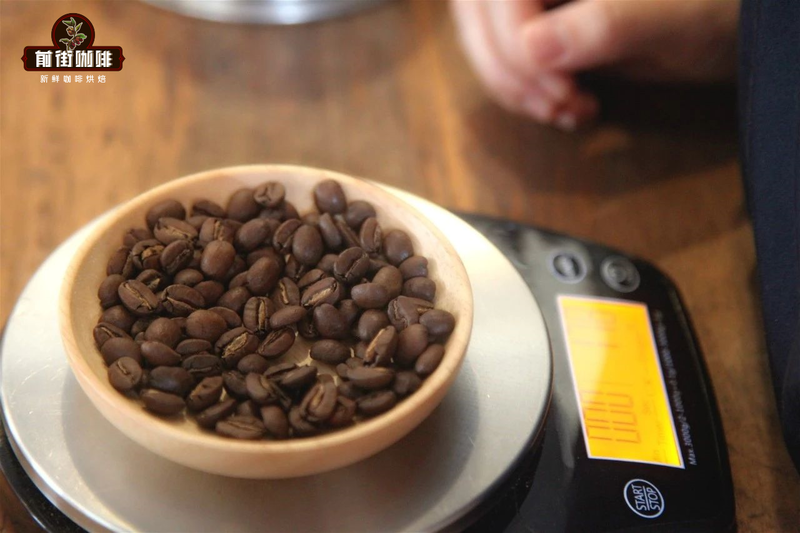
Kenya AB Komatina Cranberry
Producing area: Qianbu
Micro-area: Gitwe
Soil: volcanic clay
Altitude: 1400 m-1800 m
Varieties: Lmuri 28, SL-34, Ruiru 11
Treatment: Kenyan 72-hour washing
So why is Kenyan coffee so delicious? Qianjie believes that it is related to many factors, such as altitude, growth environment, treatment and so on. But with regard to this cranberry coffee, Qianjie first wants to focus on his treatment: K72 treatment. The flavor of K72 treated cranberry coffee is different from that of ordinary washed Kenyan coffee. The K72 treatment is fermented again on the basis of the original washing, so the taste of the cranberry coffee will be brighter and the acidity will be particularly prominent. On the specific steps of K72 treatment, Qianjie Coffee will be introduced in detail in the second half of this article. Let's start from the producing area step by step.
| 01 | Overview of Kenya production areas |
Friends with a little knowledge of geography should know that Kenya is located in eastern Africa, bordering Ethiopia. But what you don't know is that although Kenya's growing environment is similar to Ethiopian coffee, which is known as the "source of coffee", Kenyan coffee started very late. According to the Qianjie search, Kenya first planted coffee in 1893 when Bourbon (also known as French mission, to commemorate the introduction of French missionaries) was introduced from Brazil. Like the story of "go left, go right", coffee doesn't move inland to the south, but crosses the Red Sea to the north. After hundreds of years of spread, settled and mutated all over the world, he returned to his hometown: the Great Rift Valley of Africa (The Great Rift Valley).
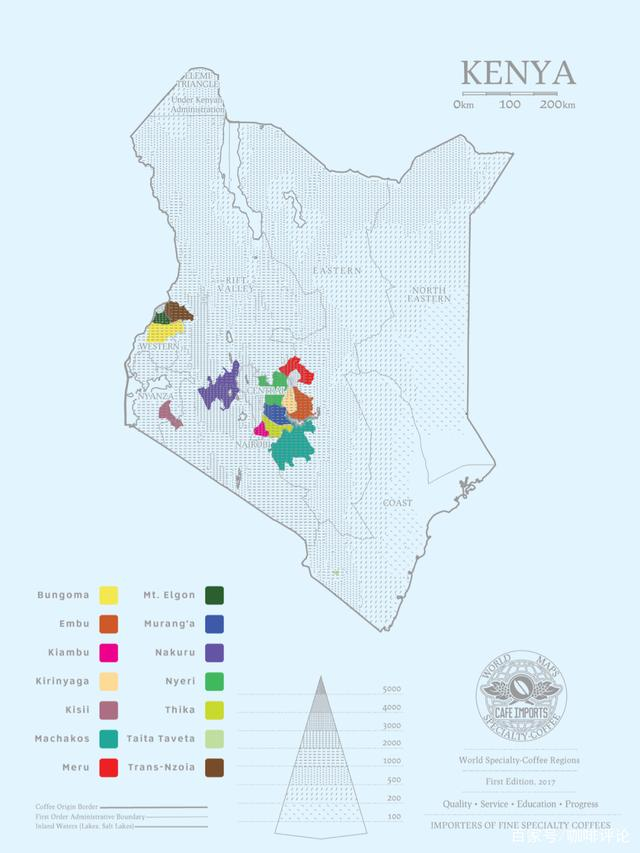
Kenya is currently one of the major coffee producing countries, and more than 6 million people are engaged in the coffee industry, mostly in the form of a combination of small farmers, wet treatment plants and cooperatives. Kenyan coffee is mainly treated by washing. Coffee trees are mostly planted in mountainous areas with an altitude of 1400 meters to 2000 meters above sea level. There are Ruiri, Thika, Kirinyaga and Mt in the producing areas. Kenya West, Nyeri, Kiambu and Muranga. Most of the famous producing areas in Kenya are concentrated in the central part, such as Nyeri, Kiambu, Kirinyaga and the western mountains near Uganda (Nakuru, Bungoma, Kitale, etc.)
02 | Coffee cultivation in Kenya
Coffee farms are mostly small-scale operations with an annual output of hundreds of kilograms. They will decide to sell the fruit to the nearby processing plant (Coffee Factory) according to the delivery distance and the purchase price. Farmers own a small area of land, which is usually measured by the total number of trees on a piece of land, which means that producers often have more autonomy to strategically pick fresh coffee fruit. and can deliver the most mature fresh coffee fruit to the local factory (washing plant). Factories generally have abundant water resources for fine washing, including soaking coffee beans in fresh water for a long time to consolidate the unique Kenyan flavor.
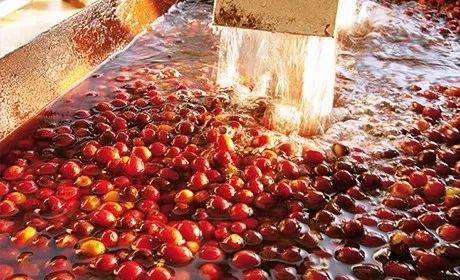
03 | Kenya coffee bean species
The main varieties in Kenya are SL28 and SL34, which were cultivated and named by "Scott Laboratories" laboratory in 1930. At present, some Kenyan Asaria coffee beans in Qianjie stores are SL28, 34 varieties. According to botanists in SL laboratory, SL28 and SL34 are genetic variants. Among them, SL28 has a mixed pedigree of French missionaries, mocha and Yemeni Tibica. The goal of cultivating SL28 was to mass produce coffee beans with high quality and resistance to diseases and insect pests. Although the yield of SL28 was not as high as expected the copper leaf color and broad bean-shaped beans have great sweetness balance and complex flavor as well as significant citrus and black plum characteristics. SL34 is similar to SL28 in flavor, with a heavier, fuller and cleaner finish than SL28, except for the complex acidity and great sweetness of the finish. SL34 has French missionaries, bourbon, and more Tibica ancestry. Dou looks similar to SL28, but is more adaptable to sudden heavy rain. It is these two important varieties that lead us to know the unique Kenyan coffee beans. At present, the popular varieties in Kenya include Ruiri 11 with high disease resistance but slightly lower taste, and Batian, K7 and Kent with high drought resistance.
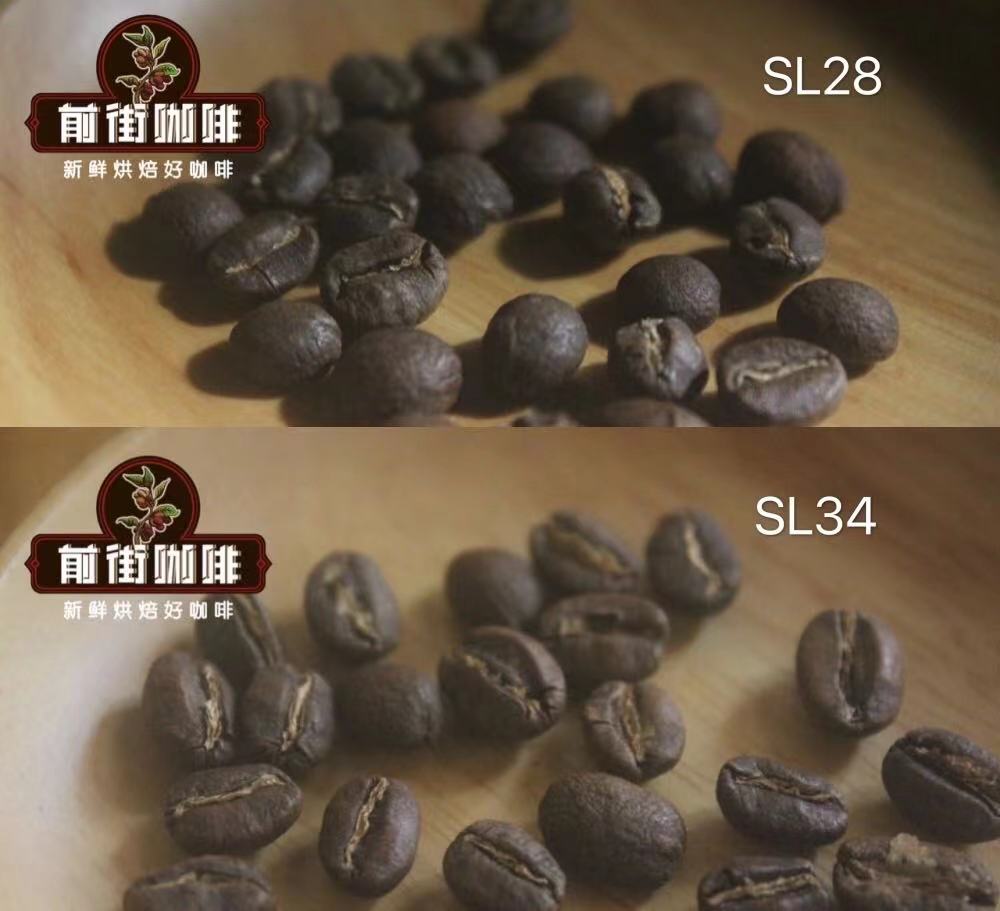
The varieties of Kenyan AB Komatina cranberries on the front street are SL-28, SL-34 and Ruiru 11. It has the classic taste of Kenyan coffee: great sweetness, balance and complex flavor, as well as remarkable citrus and black plum characteristics.
| 04 | treatment: Kenyan 72-hour washing method |
Qianjie believes that Kenyan coffee is famous for its rich layers and clean taste. And why Kenyan coffee is so sour? the reason is its special K72 treatment. After going through the process of twice washing and fermentation, commonly known as "double fermentation", this method of treatment of raw beans is quite complicated but delicate; this method takes more time and water than ordinary washing, so Kenyan coffee is more expensive, but it is also an indispensable method to create a unique sour flavor and clean taste of Kenyan coffee. Next, Qianjie will explain in detail how he handled it.
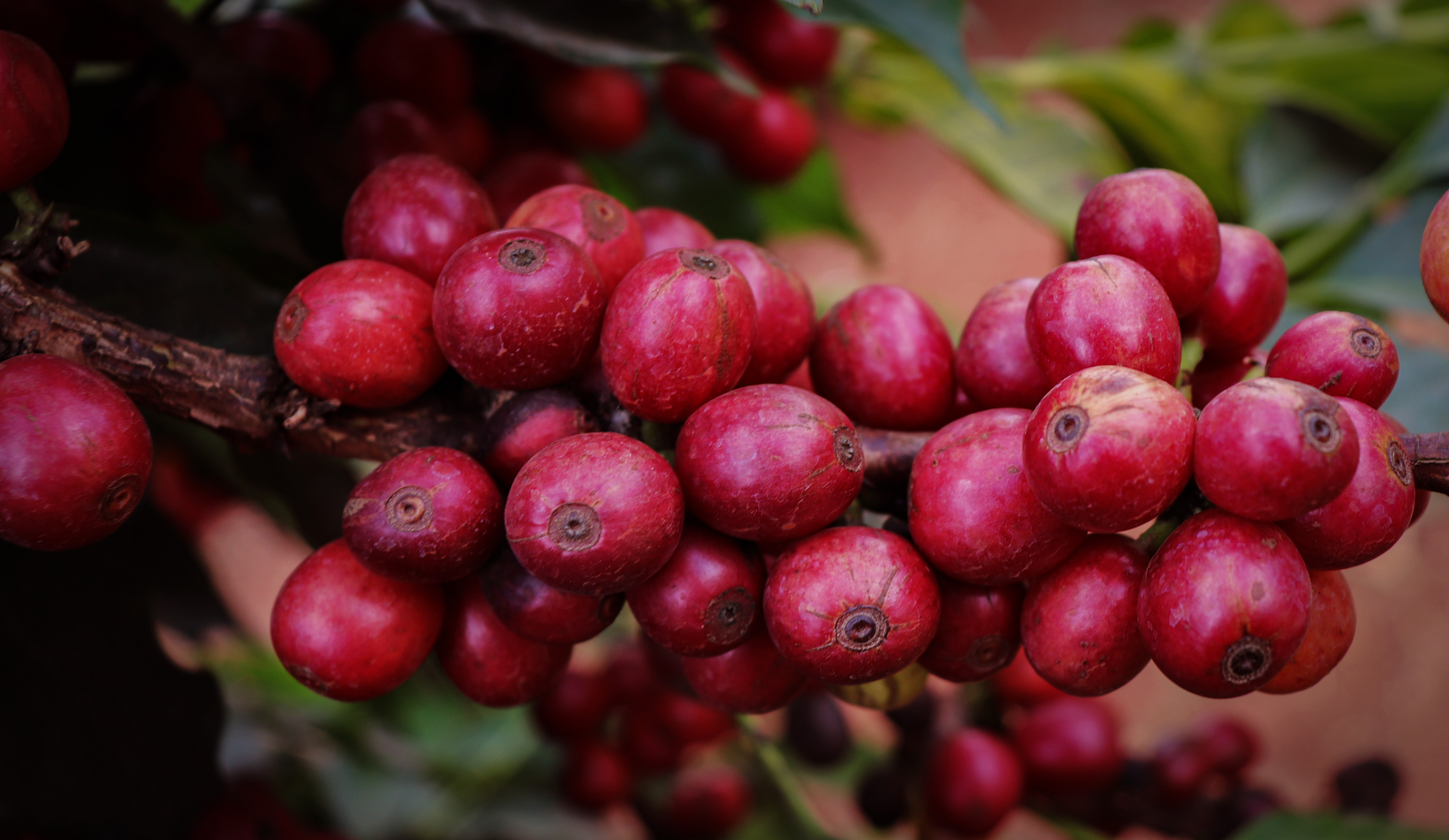
First washing and fermentation
After the coffee cherry harvest, the beans will first be picked by the specific gravity of the water flow; the principle is that the coffee fruit itself is screened by the difference in density and quality; the coffee beans with high density (heavy weight) will sink into the water, while the coffee beans with low density will float. The coffee fruits with high mature quality have high density, so they are screened out for further treatment. After selecting the high-quality and ripe fruit, the pericarp is removed, washed and soaked, and the pectin mucus attached to the outer layer of the raw bean is fermented. Pectin has natural sugars and alcohols, which play an important role in the development of sweetness, acidity and overall flavor of coffee. The fermentation time is as long as 24 hours. After fermentation, most of the pectin can be removed, leaving only the flavor in the coffee beans.
The second washing and fermentation
Then enter the second washing fermentation process, the coffee beans in the previous stage are cleaned and soaked in water for 12-24 hours. This process increases proteins and amino acids, and the acidity of coffee beans creates complex and delicate layers of taste. Finally, remove all the remaining pectin and move the coffee beans to a high shelf for sun drying, depending on the weather, which usually takes about 5-10 days to complete.
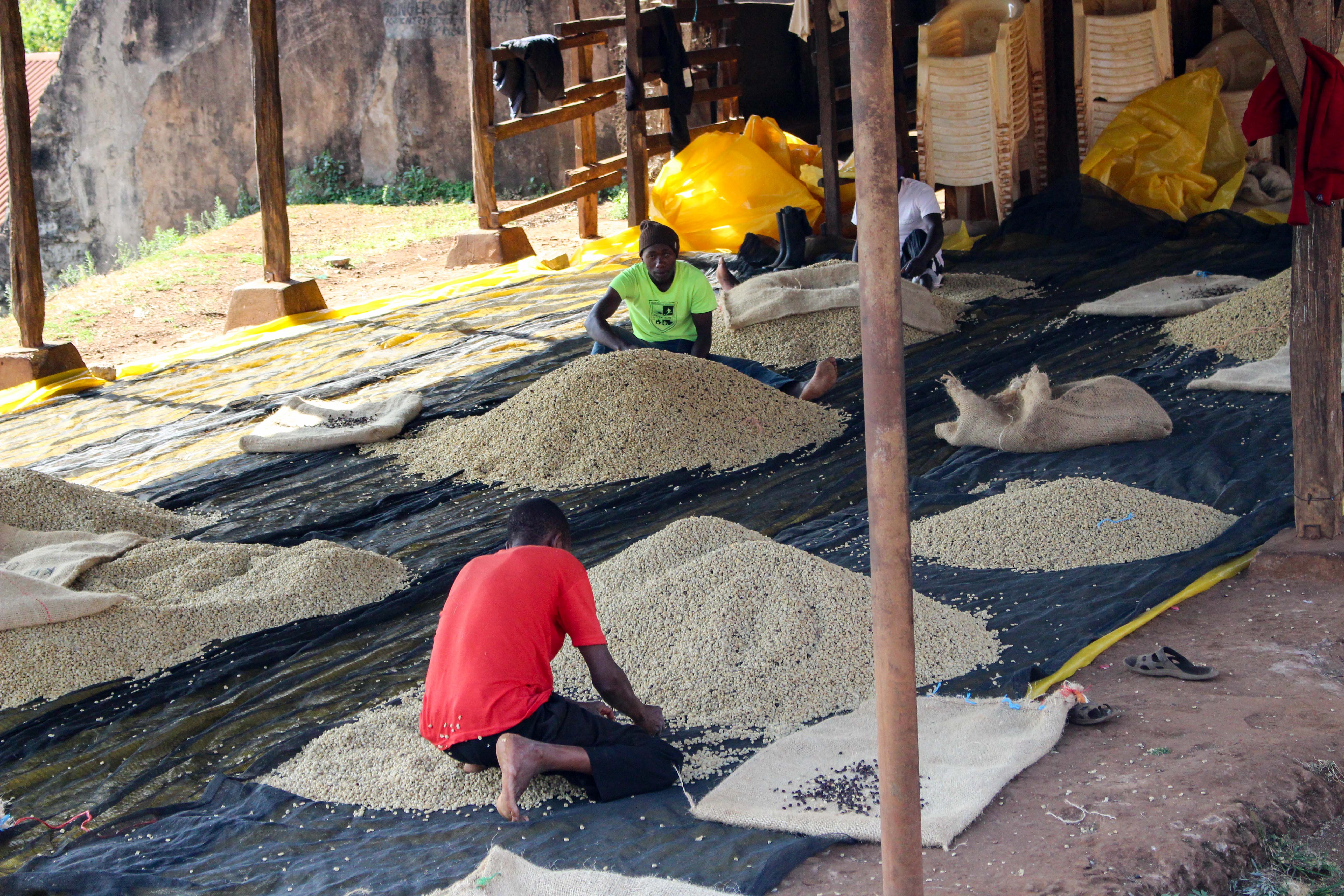
05 | Analysis of raw beans and baking of cranberries in front of Kenya AB Komatina
This coffee has relatively small particles, medium density and low water content. The goal of baking is light medium baking, which is different from other shallow baking in Kenya. This cranberry uses light medium baking to reduce the intensity of sour taste, improves texture and balance, and makes the overall performance more sweet and juicy. In the first batch of baking, the lower bean temperature is relatively high, the bean temperature is 200 degrees, and the firepower is also relatively high. In the baking process, it was found that the elevation of the bean was relatively low and the bean quality was slightly soft, so the baking technique of gradually lowering the fire and climbing steadily was adopted, and the firepower was adjusted separately when the bean entered the yellowing point, the dehydration was finished, and the precursor of an explosion was finished, so as to avoid the burns of the bean surface, prolong the explosion time slightly, increase the caramelization reaction time, and improve the texture and balance of flavor.
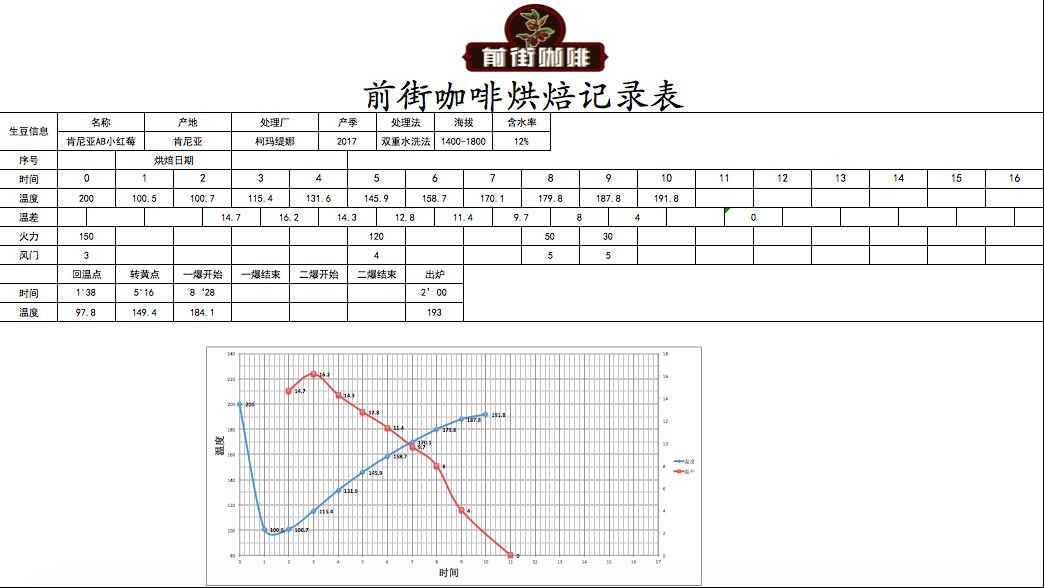
Roaster Yangjia 600g semi-direct fire
Enter the pot at 200 degrees Celsius, adjust the firepower to 150 degrees after opening the throttle for 3, 30 seconds, keep the throttle unchanged, keep the firepower at 1: 38 ", turn yellow at 5: 16", the smell of grass disappears completely, enter the dehydration stage, the firepower is reduced to 120 degrees, and the throttle is adjusted to 4. After dehydration at 7 '05pm, the firepower dropped to 80 degrees Celsius and black markings appeared on the bean surface, and the smell of toast obviously changed to coffee, which can be defined as a prelude to an explosion. At this time, it is necessary to listen carefully to the sound of an explosion point. "start an explosion at 8: 28", adjust the firepower to 50 degrees, and the throttle is fully open 5 (the firepower should be very careful, not so small that there is no burst sound), and the development after one explosion will be 2: 00. " Put it in the pot at 193 degrees.
06 | Kenyan coffee grade
Many people are confused about letters such as AA and PB in the name of Kenyan coffee, which is actually the grade of Kenyan coffee. The quality of coffee in Kenya is strictly controlled, which is divided into AA,AB,C,E,PB,TT,T,ML,MH according to size, particle and shape. The main purpose of the grading is to distinguish the shape and size of beans, but many people believe that beans with larger grains contain more oils that produce coffee aroma, and because of this, beans with larger grains are more expensive on the market. The size of AA is 17 and 18 mesh, and that of AB is 15 and 16 mesh. The cranberry coffee in the former street, for example, is an AB grade coffee bean, which is obviously different from the AA grade coffee bean size. In the same level of beans, the highest grade is manor beans, followed by "+" followed by the general AA, AB grades, C is smaller beans, E is extra-large elephant beans. The TT, T, ML and MH in the back are not seen locally.
As for the distinction of quality, Kenya uses the digital grading method to distinguish the quality of coffee, but this digital grading method is not much publicized, so few people know about it. Therefore, the classification is based on particles, and the PB with different shapes is about the same as AA, but if it is manor or +, it is two or one grade respectively. For example, AB manor beans are about the same as AA+ and PB+. The flavor grade is TOP, PLUS and FAQ in order. FAQ "Fair to Average Quality" will have some slight defective beans, but does not affect the flavor.
Many friends in front of the street reported that Kenyan coffee will be very sour, so how to make sour Kenyan coffee beans? Qianjie gives the cooking parameters used in the store:
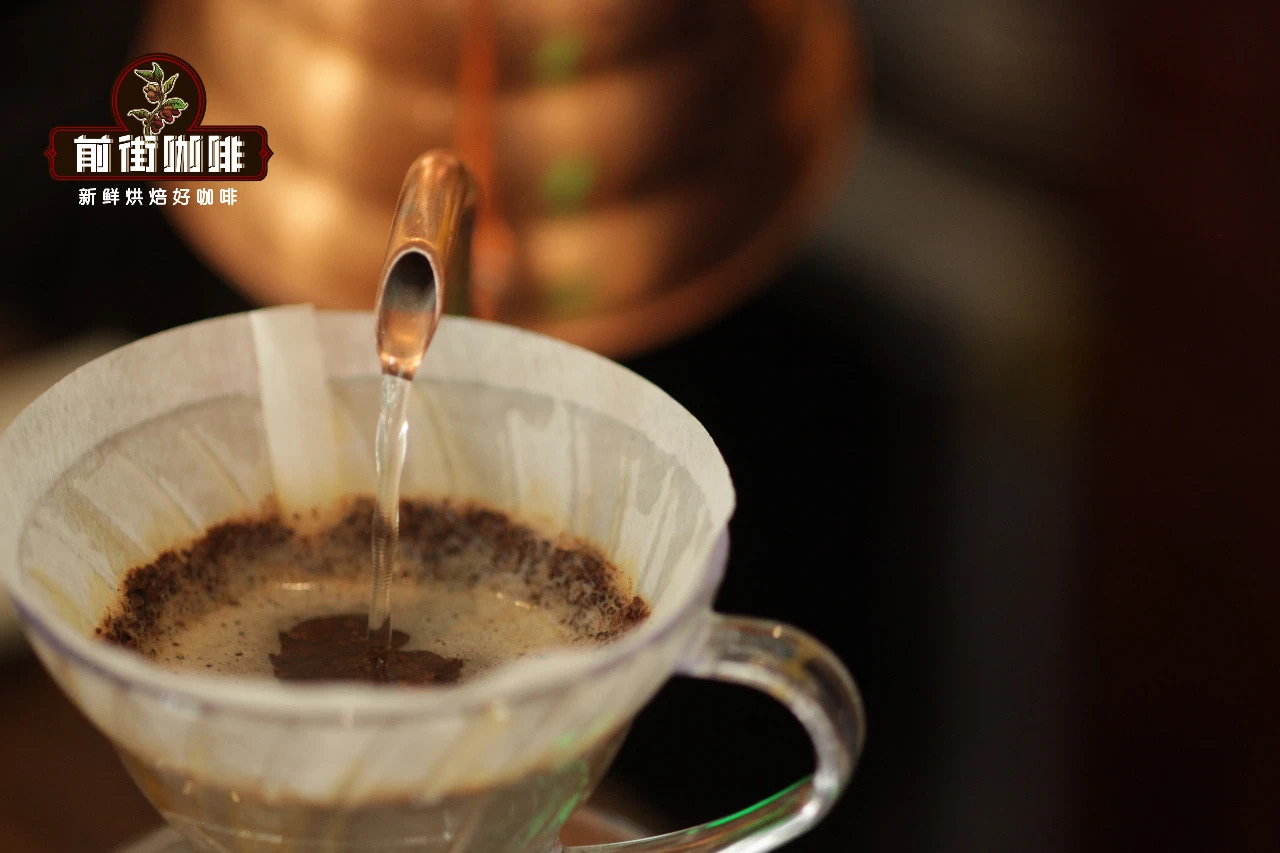
V60 filter cup
Water temperature 91 ℃
Ratio of gouache to flour at 1:15
Powder content 15g
Degree of grinding (China 20 standard screen pass rate of 80%)
Qianjie cooking technique: use 30 grams of water for steaming for 30 seconds, small water flow around the circle to 125 grams for segments, when the water level is about to expose the powder bed, continue to inject water to 225 grams to stop water injection, wait for the water level to drop and remove the filter cup when the powder bed is about to be exposed. (the time of steaming starts) the extraction time is 2 minutes 39 percent 00 ".
The Kenyan coffee brewed in this way has a well-balanced texture, with obvious and soft acidity and sweetness, with rich citrus, grapefruit and berry flavors. If the three-stage extraction, you have mastered and know how to adjust the taste of coffee, you can change the parameters later in the brewing to find the right way of extraction.
Professional coffee knowledge exchange more coffee bean information please follow the coffee workshop (Wechat official account cafe_style)
For more boutique coffee beans, please add private Qianjie coffee on Wechat. WeChat account: kaixinguoguo0925
Important Notice :
前街咖啡 FrontStreet Coffee has moved to new addredd:
FrontStreet Coffee Address: 315,Donghua East Road,GuangZhou
Tel:020 38364473
- Prev
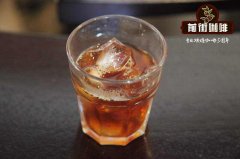
Kenya RUMUKIA processing plant introduction _ Kenya Nieli producing area coffee how to drink?
Professional coffee knowledge exchange more coffee bean information please follow the coffee workshop (Wechat official account cafe_style) 2018 new season Kenyan coffee with the super Tambaya to start the season! Kenya Coffee Ritambaya processing Plant AA TOP two hand-selected special batches Kenya Nyeri Tambaya Factory AA TOP Double Handpick (30KG origin vacuum)
- Next
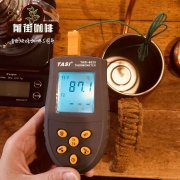
Kenya Domens Manor Coffee Flavor characteristics _ Dorman Company introduction _ FAQ what does it mean?
For more information on coffee beans, please follow the coffee workshop (Wechat official account cafe_style). Kenya Coffee AA FAQ Dorman Kenya AA FAQ country: Kenya name: multiple doors Kenya AA FAQ Grade: AA FAQ treatment: washing varieties: SL 28, SL 34 Kenya is one of the major coffee producing countries in East Africa.
Related
- Detailed explanation of Jadeite planting Land in Panamanian Jadeite Manor introduction to the grading system of Jadeite competitive bidding, Red bid, Green bid and Rose Summer
- Story of Coffee planting in Brenka region of Costa Rica Stonehenge Manor anaerobic heavy honey treatment of flavor mouth
- What's on the barrel of Blue Mountain Coffee beans?
- Can American coffee also pull flowers? How to use hot American style to pull out a good-looking pattern?
- Can you make a cold extract with coffee beans? What is the right proportion for cold-extracted coffee formula?
- Indonesian PWN Gold Mandrine Coffee Origin Features Flavor How to Chong? Mandolin coffee is American.
- A brief introduction to the flavor characteristics of Brazilian yellow bourbon coffee beans
- What is the effect of different water quality on the flavor of cold-extracted coffee? What kind of water is best for brewing coffee?
- Why do you think of Rose Summer whenever you mention Panamanian coffee?
- Introduction to the characteristics of authentic blue mountain coffee bean producing areas? What is the CIB Coffee Authority in Jamaica?

